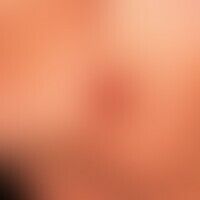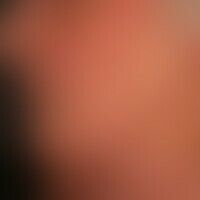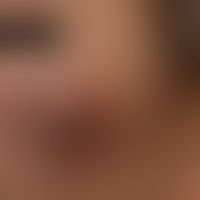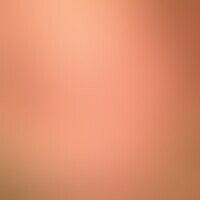
Facial granuloma L92.2
Granuloma eosinophilicum faciei (Granuloma faciale): Typical finding in a 72-year-old man. No significant secondary diseases, no medication history. The finding has existed for several years, is slowly progressive. No significant symptoms.

Pemphigoid scarring disseminated L12.1
Pemphigoid scarring, type Brunsting-Perry: completely therapy-resistant, extensively reddened and erosive skin areas.

Tinea faciei B35.06
Tinea faciei: 7 weeks before, a petting zoo was visited. large-area, circulatory rim-emphasized, moderately itchy (pre-treatment with glucocorticoids) plaques. detection of Tr. mentagrophytes.
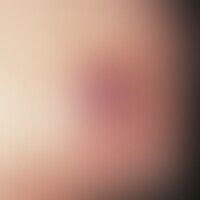
Spiradenoma L74.8
Spiradenoma: Hemispherical, reddish-livid tumor with smooth surface and small central erosion of the forehead in a 74-year-old woman.

Lupus erythematodes chronicus discoides L93.0
Lupus erythematodes chronicus discoides. 15 years of persistent and, despite disease-adapted therapy measures, constantly progressive skin changes in a 64-year-old patient. Large scar plate with marginal and intralesional erythema as well as isolated flat ulcers (currently covered with crust).

Acne papulopustulosa L70.9
Acne papulopustulosa: numerous inflammatory papules and pustules. few scars. numerous skin-coloured comedones

Darian sign
Urticaria pigmentosa of childhood: extensive redness and urticarial reaction in the lesions after mechanical irritation.

Acne papulopustulosa L70.9
Acne papulopustulosa: In acne typical distribution, red smooth and excoriated papules and some pustules.

Folliculotropic mycosis fungoides C84.0
Mycosis fungoides follikulotrope: generalised clinical picture; smooth plaques that dissect at the edges, with clear evidence of follicular involvement.

Facial granuloma L92.2
Granuloma eosinophilicum faciei (Granuloma faciale): Therapy resistant 2.5 cm high, red, surface smooth knot.

Airborne contact dermatitis L23.8
Airborne Contact dermatitis: chronic (>6 weeks) extensive, enormously itching and burning eczema with uniform infestation of the entire exposed facial area including the eyelids.

Basal cell carcinoma ulcerated C44.L
basal cell carcinoma ulcerated: skin change existing for years. initially asymptomatic nodule, increasing surface growth, central ulcer formation. typical for the diagnosis "basal cell carcinoma" is the raised, glassy appearing marginal wall. detailed view.

